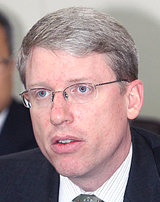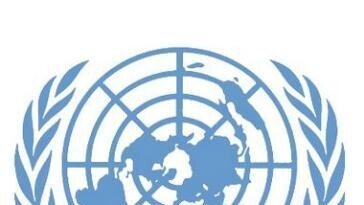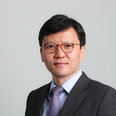美 국방차관보 대행 본보 인터뷰

“한국에 대한 방위공약은 철통(ironclad)같다. (다만) 이를 어떻게 이행할지는 고정되지 않았다(not fixed).”
데이비드 헬비 미국 국방부 인도태평양안보 담당차관보 대행(사진)은 지난달 31일 동아일보와의 단독 서면 인터뷰에서 ‘주한미군을 현재 규모로 유지할지 확언할 수 있느냐’는 질문에 이렇게 답했다. 그가 한국 언론과 인터뷰를 한 것은 처음이다.
헬비 차관보 대행은 중국이 반대하는 중거리미사일의 한반도 배치에 대해선 “공동의 위협에 대응하기 위한 군사능력의 배치 및 고려는 동맹의 틀 안에서 이뤄질 것”이라며 가능성을 배제하지 않았다. 3일 미국 대선을 며칠 앞둔 시점이지만 그는 한미 현안에 대한 견해를 상세히 피력했다. 다음은 주요 질의응답 요약.
“마크 에스퍼 국방장관은 7월 ‘주한미군 철수를 지시한 바 없다. 그러나 취임 당시 국가국방전략(NDS)을 이행하겠다는 점을 명확히 했다는 점도 밝혀 두겠다. 우리는 군을 최적화하기 위해 모든 지역 사령부에서 조정을 계속 살펴볼 것이다’라고 밝힌 바 있다.”
―그렇다면 주한미군의 현 규모와 수준 유지를 확언(assurance)할 수 있나.
“우리의 (방어)공약은 오랜 공동의 헌신과 희생을 통해 구현되었듯 철통과 같다. (다만) 어떻게 우리가 그 공약을 이행할지는 고정되지 않았다. 우리는 당장의 임무 수행 및 평화롭고 안정적이고 번영하는 한반도·인도태평양 지역을 위해 한국 및 동맹국들과 자원 조정(align resources)에 힘쓸 것이다.”
―미국이 말하는 중국의 위협과 관련해 한미 간 협력할 영역이 있다면….
“지난 10년 동안 한국은 안보수혜국에서 안보제공국으로 바뀌었다. 한미는 한반도뿐 아니라 태평양 지역에서도 단결돼 있으며 공동의 안보 도전을 파악하고 지역 내 국제질서를 위해 계속 협력하고 있다. 미래 지향적으로 말한다면, 한국이 국제안보 이니셔티브에 있어 보다 더 활발한 역할을 수행하길 원한다. 한국은 여러 지역의 신뢰받는 파트너이자 존경받는 친구로 국제적으로 보다 더 많은 일을 할 수 있는 엄청난 능력을 갖고 있다.”
―향후 미국이 한국과 일본 또는 둘 중 한 곳에 중거리미사일 배치를 고려할 가능성은….
“2020년 ‘중국 군사력보고서’에 따르면 중국이 2019년 한 해 동안 시험 및 훈련용 탄도미사일을 발사한 횟수는 같은 기간 전 세계 국가의 것을 합한 수치보다 많았다. 공동의 적에 대응하기 위한 군사력 배치 고려는 동맹의 틀 안에서 이뤄질 것이다. (다만) 내가 특정 군사력에 대한 가상의 시나리오에 대해 추론하는 것은 부적절할 듯하다.”
―한미 간 전작권 전환과 관련한 견해차가 있다면 이를 좁힐 수 있는 방안은….
“한미는 조건에 기반한 전작권 전환 계획(COT-P)에 합의한 바 있다. 이 조건들이란 명료하고 실리적인 군 차원의 요건들로 한국군 주도의 연합방어에 필요한 능력 구비, 한국군의 북한 핵·미사일 대응력 구축, 한반도와 역내 안보환경 등이다. 또 전작권 전환은 인도태평양에서의 미국의 장기 전략을 지원한다. 미국은 동맹국과 파트너국들이 자국 방어를 위해 보다 많은 일을 할 수 있도록 이들을 강화시키고 능력을 갖출 수 있게 만들길 원한다. 합의한 전작권 전환을 위한 조건들은 바로 이 같은 목적 달성을 지원해 준다.”
―방위비분담금 협상 상황은 어떤가.
“국무부가 주도하고 있다. 다만 합의가 지연될수록 궁극적으로 한반도 한미연합방위태세에 악영향을 미친다. 한국 정부가 최대한 빠른 시일 내 방위비분담금협정(SMA) 합의에 다다를 수 있기를 권한다.”
워싱턴=김정안 특파원 jkim@donga.com / 윤상호 군사전문기자
[Exclusive Interview]David Helvey :“How we manifest security commitment, though ironclad, is not fixed”
By Jungahn Kim·Washington correspondent
jkim@donga.com
David F. Helvey, principal deputy assistant secretary of defense for Indo-Pacific security affairs reaffirmed the ironclad security commitment of the United States to the ROK. However, he added that “how we manifest the commitment is not fixed.”
Though any imminent talk of troop reduction or withdrawal is unlikely, many experts agree such a statement from a senior Pentagon official signifies the possibility of future adjustments. A source familiar with the internal dynamics of the US government said “if not an immediate withdrawal or reduction of the US troop, more rotational forces can replace the permanent forces in the peninsular if need be.”
Mr. Helvey in an exclusive written interview with DongA daily & ChannelA also said: “Any consideration for the deployment of a military capability to counter common threats will be made within the Allinace construct”, when asked about the possibility of the US considering the option of deploying middle range missiles in ROK and/or in Japan in the future.
An excerpt of the exclusive written interview is available in the following:
―It appears that there are a number of disagreements ranging from OPCON Transfer and Burden Sharing to Regional Issues surrounding US Security relations (so called “hub and spoke” system in the INDOPACIFIC). What are the issues that seem to prevent you from getting to an agreement?
“The relationship between the United States and Republic of Korea is built on 70 years of trust and mutual respect. Over those 70 years, the U.S. security commitment to the ROK has been and continues to be ironclad. The Alliance has contended with tough issues throughout its history, and has always emerged stronger on the other side. This is based on the fundamental shared goal of strengthening our combined defense posture to protect the American and Korean people. These challenges are never insurmountable. The discussions that took place recently at the 52 nd Security Consultative Meeting (SCM), and in other recent dialogues, are indicative of the commitment of both countries to strengthen our joint security, enhance our relationship, and maintain our long-standing trust and mutual respect. We are grateful that Minister Suh was willing to travel to Washington to participate in-person under such difficult circumstances. His visit reflected the highest value that both governments place on the sustained strength of the Alliance.”
―The current burden sharing negotiation is at impasse. Do you anticipate the SMA and burden sharing discussions to continue this year and, if not, why? Can you tell us about the prospect of making some agreements before the end of the year? Given the necessity for the readiness of combined forces, how do you see the SMA agreement moving forward?
“The State Department is the lead for negotiations on the Special Measures Agreement(SMA). I defer to them for any specific timelines associated with the negotiations. However, the longer that we go without an agreement, the greater the impact on our force readiness at USFK¤which is also ultimately detrimental to the combined defense posture on the Peninsula.”
―Is there a preferred deadline for the SMA negotiation? Does the US want to resolve SMA before the end of the year 2020?
“The State Department is the lead for negotiations ¤ so I defer to them on timing. We encourage the ROK government to conclude an agreement with the U.S. government as soon as possible. The longer that we go without an agreement, the greater the impact on our force readiness at USFK, which is ultimately detrimental to the combined defense posture on the Peninsula.”
―There have been some indications that the SCM held on October 14 left more room for further discussions between the two allies. I understand that the US wants to ensure a conditions based approach and that the ROK is looking at a time based approach. What would allow the two sides to come closer to an agreement and when do you anticipate this occurring?
“Both the United States and the ROK remain committed to the conditions-based
approach to OPCON transition, consistent with the bilaterally agreed to Conditions-
Based OPCON Transition Plan (COT-P). These conditions are clear and unambiguous, and based on pragmatic military requirements: 1) the acquisition of necessary military capabilities for a South Korea-led combined defense; 2) the securing of critical military response capabilities for the Alliance to counter the DPRK nuclear and conventional missile threat; and 3) security environment on the Korean Peninsula and in the region that is conducive to transition. OPCON transition supports the long-term strategy of the United States in the Indo-Pacific. The United States wants to enable and strengthen its allies and partners to do more for their own defense, which then enables us to focus greater resources on other shared threats. The agreed-upon conditions for OPCON transition support this goal. Conditions-based wartime OPCON transition is not only what the United States and of Korea mutually agreed to, it is also necessary to ensure the security of our military forces, peoples, and the region.”
―The US has not committed to maintaining the current USFK troop level in the joint
statement of this year‘s SCM. Historically, this commitment has been in previous SCM and it was reported that the phrase was excluded at the request of the US. Could you explain the reason for such a decision and its implications?
“Secretary Esper has addressed this issue on numerous occasions. In July, Secretary
Esper issued the following statement: ”I’ve issued no orders to withdraw forces from
the Korean Peninsula, I will say, though, when I took office, I was clear that I was
going to implement the National Defense Strategy. Part and parcel of that means
looking at every geographic combatant command and making sure that we are
optimized and positioned as well as possible to accomplish ¤ not just fulfill ¤ the
NDS, but also making sure the regional missions we‘ve tasked are there. So we will
continue to look at the adjustments, at every command we have in every theater, to
make sure we are optimizing our forces.“ The Secretary has also noted the ironclad security commitment of the United States to the ROK, consistent with our commitments in the Mutual Defense Treaty. Notwithstanding, the United States must maintain operational flexibility to realign our forces to meet emerging challenges.”
―Can you provide the assurance that the US will maintain commitment to preserving its overall troop strength in the ROK, at the present size/level and capability?
“Our commitment is ironclad, as we have demonstrated through years of shared service and shared sacrifice. How we manifest that commitment is not fixed; our NDS
highlights the need to look across the joint force to ensure we are optimized to the
threats we face. If we are not agile, if we do not modernize, if we cannot optimize, we will be less effective. We are committed to working with our ROK allies to align
resources to the tasks at hand and ensuring a stable, peaceful, and prosperous
Peninsula and Indo-Pacific region.”
―Is there any indication from the analysis of the recent military parade on October 10 that the DPRK has expanded its capability? Are you concerned that the new weapons systems shown indicates an escalatory trajectory?
“I won’t comment on intelligence matters, but we continue to urge North Korea to
meet its international commitments by refraining from further developing of its
nuclear weapons and ballistic missile systems which pose a serious threat to the
Korean Peninsula and the region. Our policy remains denuclearization of North Korea in order to build a new future for the North Korean people. North Korea‘s rhetoric and actions have not dissuaded us from that goal. We encourage the DPRK to return in good faith to dialogue while it has this once-in-a-generation opportunity.”
―According to the US, aggression by China has been increasing at an alarming rate.
Against this backdrop, what are the areas of cooperation between the US and the ROK in mitigating the tensions in the South China Sea, for instance? Additionally, where are other areas of military security cooperation that the US and the ROK should seek against Chinese aggressions?
“Over the last decade, South Korea has gone from being a net security recipient to a
net security provider that is truly a partner for peace and security in the region. The respective strategies of both countries¤the Free and Open Indo-Pacific strategy
of the United States and South Korea’s New Southern Policy¤are in strong alignment
and we are united in the Pacific as much as we are on the Korean Peninsula. We continue to work with our ROK allies to identify and address common security challenges, including maintaining the rules-based international order and building
capacity for partners in the region. Providing support for third-party countries that are vulnerable to Chinese economic and political coercion is an important area for further cooperation. Looking to the future, we would like to see the ROK become even more active in global security initiatives. The ROK is a respected friend and trusted partner to many in the region, and has tremendous capacity and to do a lot of good globally.”
―Mr. Marshall S. Billingslea, Special Presidential Envoy for Arms Control described
China as “nuclear bully” during his visit to the ROK and encouraged the ROK to join in the US-led effort of deterrence against China. Against this backdrop, is there any possibility that the US would consider the option of deploying middle range missiles in ROK and/or Japan in the future?
“As outlined in the 2020 China Military Power Report, in 2019, the PRC launched
more ballistic missiles for testing and training than the rest of the world combined.
China is also pursuing a number of advanced military capabilities with disruptive
potential such as hypersonic weapons technology designed to complicate U.S.
calculus and put our allies at risk. Any consideration for the deployment of a military capability to counter common threats will be made within the Alliance construct. It would be inappropriate for me to speculate on the hypothetical deployment of specific capabilities.”
―If the ROK and/or Japan consent to the deployment of middle-range missiles in their respective areas, would it be a matter of months or years in terms of carrying out the actual deployment in the region?
“It would be inappropriate for me to speculate on the hypothetical deployment of
specific capabilities.”
―The US-ROK military exercises have either been scaled back or cancelled. The
deployment of the US strategic assets has also been stalled for nearly three years. In light of this, there has been some skepticism over the US‘s commitment to extended deterrence in Korea. What would be your response to such concern?
“The U.S.-ROK Alliance, militarily-speaking, is among the most combined,
interoperable, capable, and dynamic in the world. We remain in daily contact with our ROK allies. The nature of our combined defense means that communication is constant and occurs at every level between the U.S. and the ROK. The U.S. extended deterrent provided to defend the ROK is clear and unambiguous, and includes the full range of military capabilities, including U.S. nuclear, conventional, and missile defense capabilities.”
―Secretary Mark T. Esper, said last August that he was in favor of deploying ground-based missiles to Asia and that he would like to see the deployment within “months”. Can you elaborate on how this ground based missile deployment is part of the broader INDOPACIFIC Strategy? What other measures are you considering?
How do you envision the involvement of South Korea in the broader INDOPACIFIC Strategy and how do think it will impact the Alliance?
“The United States recognizes the Indo-Pacific region as a priority theater. Moreover,
the region is ripe with both challenges and opportunities alike. We have made great strides together with our allies and partners to demonstrate, reinforce, and take mutually supporting actions that strengthen that commitment. It would be inappropriate for me to speculate on the hypothetical deployment of specific capabilities.”
―North Korea’s leader Kim Jong-un has issued a rare personal apology for the killing of a South Korean official in the North Korean waters recently. The apology also implied that Kim Jong-un was not aware of this killing of a South Korean official and that the body was not burned by the North. What do you think Kim Jong-Un‘s apology signifies? Do you see any implications for the DPRK’s actions or lack of actions in prospective future talks?
“I will let Chairman Kim and North Korea speak for themselves.”
―In addition, is there any area of cooperation between the US and ROK to shed a light into what exactly happened in the North Korea waters that day?
“This is a bilateral issue between the Democratic People‘s Republic of Korea, and the Republic of Korea. I’d defer to their respective representatives.”
-
- 좋아요
- 1개
-
- 슬퍼요
- 1개
-
- 화나요
- 0개




댓글 9
추천 많은 댓글
2020-11-02 11:19:19
느그이니 현재 상황 으따 아메리카는 우덜 돈지갑인께 계속 지원해줘야제 아암 으따 중국은 큰나랑께 우덜이 중국이랑 같이 가야제 으따 북녘은 나으 고향이자 우덜 형제랑께 무조건 퍼 줘야 한당께 캬캬캬컄캬
2020-11-02 13:24:03
"나는 공산당이 싫어요. " (1968년 12월 9일 학살) 1968년 오늘, 북괴 정찰총국 124군부대 소속 무장공비 120명이 울진, 삼척지구에 침투하여 주민 수 십 명을 학살한 사건을 우리는 뚜렷이 기억하고 있다. 이들은 같은 해 1. 21. 청와대를 습격한 김
2020-11-02 15:28:25
미국이 왜 스스로 가치를 떨어뜨리는지 원.....